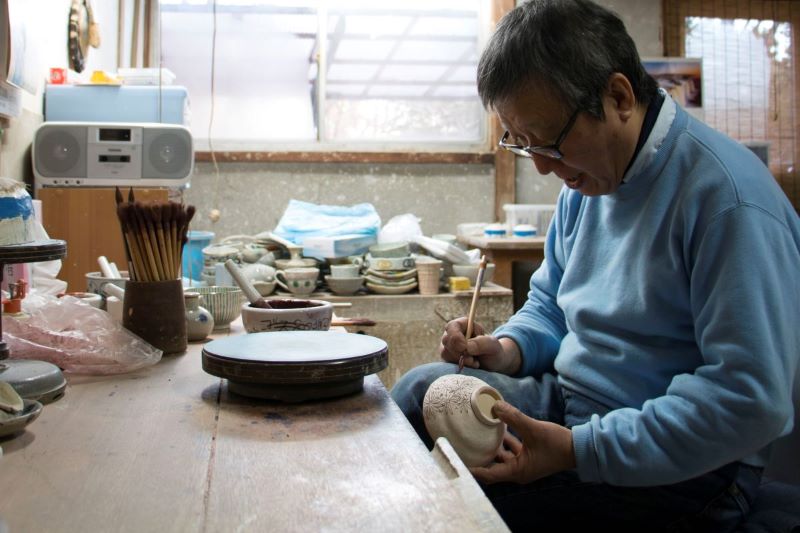Painting, in which patterns and pictures are drawn on the formed fabric, can be broadly divided into underpainting, which is painting under the glaze, and overpainting, which is painting on top of the glaze.
For underpainting, the molded dough is dried and then painted directly onto the bisque fired material.
These are painted with pigments such as cobalt, iron, and copper, covered with a transparent glaze, and fired at a high temperature of over 1200 degrees.
Sometsuke painted with cobalt oxide called gosu is indigo blue, and iron-painted ones found in Shino, Ekaratsu, and Oribe are colored from brown to blackish-brown.
In addition, there is glazed urabeni, which is painted with copper oxide to create a reddish color.
It is common to apply the sketch with a brush stroke, but there are also techniques called seal stamping and blowing ink.
On the other hand, for overglaze painting, patterns are applied with a brush on top of the glaze of the fired vessel using red, colored, or five colors.
A wide variety of paint colors are used, and the paints are scientifically mixed by adding lead, soda, etc. to metals such as iron, copper, cobalt, and manganese.
To prevent the color of the paint from fading, it is fired at a low temperature of around 800 degrees.
Underpainting and overpainting may be used together. Imari decoration techniques and Ironabeshima are representative examples of this method.

